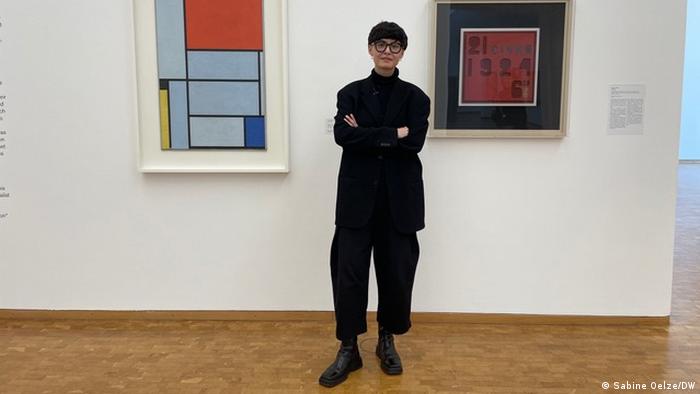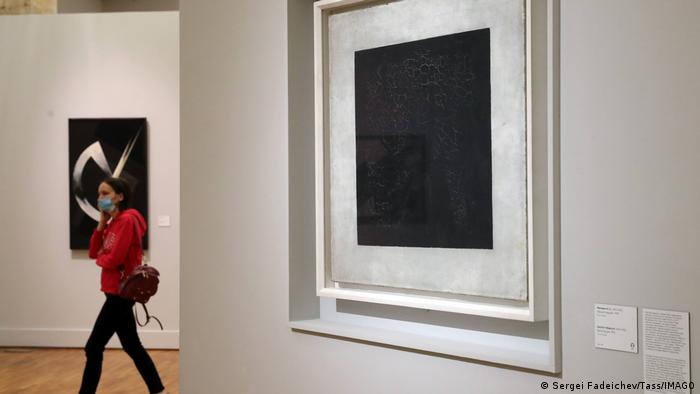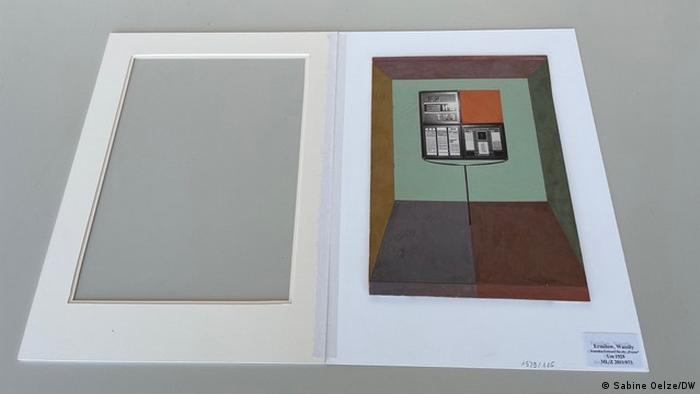For more than a million people from Ukraine, Germany has become an emergency home. Also for the curator Yulia Berdiiarowa. In Cologne she is helping Ukrainian art to regain its history.

“Carousel” (1921) by Davyd Burljuk
The curator Yulia Berdiiarowa picked me up at the back entrance of the Museum Ludwig on a Monday afternoon. The exhibition hall, which is located in the immediate vicinity of the main train station and Cologne Cathedral, is closed to the public at this time. The 29-year-old art historian had worked at the Odessa Fine Arts Museum and the Mystetskyi Arsenal in Kiev before the Russian war of aggression against Ukraine. Yulia Berdiiarova would like to show me some artworks that will be on display in the exhibition “Ukrainian Modernism 1900- 1930” will be on display. The curator has been strengthening the team at Museum Ludwig for almost a year and is helping with the preparations.

Yulia Berdiiarova is fighting on the cultural front for a new look at Ukrainian modernism
Many works from the extensive exhibition, which was on view in Madrid for the first time until April, were evacuated during the war. She had never seen anyone outside of Ukraine before. In addition, some paintings were taken from the depots for the first time in the Ludwig Museum and will also be part of the exhibition in Cologne. We take the stairs to the first floor and walk through a deserted museum. A museum without people makes her sad, she says. “Unfortunately, many museums in my home country are still closed. They are open places where dialogue takes place, where people can be built up and come into contact with history.”
The war forced Yulia Berdiiarowa to escape
The Russian war of aggression in Ukraine – for Yulia Berdiiarowa it is always present in Cologne. Still, she did well. Three foundations finance her position at the Museum Ludwig and her stay in Cologne. But when the Ukrainian left Odessa in June last year, she didn't know what was to come. A step into the unknown. “Leaving Odessa was very difficult for me. I had absolutely no idea how I was going to live without my job. It was a step into nothing. I could only take a small bag with me.” In it ID cards, documents, the essentials to get dressed.

Kazimir Malevich was wrongly described as part of the Russian avant-garde
In the meantime, Yulia Berdiiarowa has had a few items of clothing sent to her from Ukraine. In front of me stands a stylish woman dressed entirely in black. Suit, turtleneck, dark glasses: She does everything to look like a typical curator, she says with a wink. Her model is the famous painting “Black Square” by the artist Kazimir Malevich,
Yulia Berdiiarowa changes the spelling of Ukrainian artists
Actually, she would have preferred to stay in Ukraine. In the first months after the war broke out, she and her colleagues evacuated works from the museum in Odessa, but then life in the city on the Black Sea became impossible for her because of the attacks. Her escape took her across Ukraine and initially ended in Warsaw, Poland. From there she made her way to Cologne via Berlin. Ukrainian colleagues drew her attention to the offer of the Ernst Siemens Foundation, a program for Ukrainian curators in Germany.
Art Against War
In Cologne, too, she is not abandoning her homeland, on the contrary: she is defending Ukraine on the cultural front. She fights in her own way: with letters. At the Ludwig Museum, she corrects all the names of Ukrainian artists. “First we freed the spelling of the cities from their Russian spelling. That was part of the Soviet Union's appropriation culture of Russifying city and personal names. We made Kharkiv back out of Kharkiv. The names were transcribed from the Russian alphabet to the Latin alphabet. And I I'm very proud that the Ludwig Museum also agreed to the corrections.”
It was the war of all things that changed the view of Ukrainian art
The Ukrainian artist Aleksandr Bohomazov is now called Oleksandr Bohomazov, the Ukrainian capital is now spelled “Kyjiv”. It sounds paradoxical: the war, of all things, is helping the public to get to know Ukraine and its art history – also thanks to Yulia Berdiiarowa's work. At the Ludwig Museum, she combed through the collection holdings and not only came across names of Ukrainian artists whose names were misspelled. She also corrected national affiliations. “Malevich still says Kiev. We will change it to Kyjiv. He was also a Ukrainian with a Ukrainian passport. He had an important time as a professor at the local art academy. He also published his texts in Ukrainian magazines. All of that became suppressed, so he was always considered a representative of the Russian avant-garde.”

This graphic by Vasyl Yermilov is used for the exhibition “Ukrainian Modernity” restored
Like Malevich, other Ukrainian artists were taken hostage by the so-called Russian avant-garde. For example Vasyl Yermilov. The artist was born in Kharkiv in 1894, but was considered a representative of the Moscow Constructivism movement. Now, on the initiative of Yulia Berdiiarowa, it is hanging in a new neighborhood – next to works by Piet Mondrian and Kasimir Malevich. “Late, but at least justice,” says Berdiiarowa proudly.
Russian avant-garde co-opted Ukrainian artists
“We are trying to understand how the term Russian avant-garde was part of the system of appropriation of culture in the post-imperialist area and why it was able to exert so much power. How could this issue have been overlooked for so long? Why did the imperialist background of the Soviet Union become so long in the first place All of these are processes that will continue for a very long time,” explains the curator.
Together with numerous colleagues, she is therefore compiling a directory of all Ukrainian artists in worldwide collections. This list is intended to prove how diverse the Ukrainian art landscape was and how Russian propaganda denied it its place in art history.
Even if she feels at home in Cologne – and the Crane Houses on the Rhine she thinks of motifs from constructivist paintings remembered how she tells it with a smile – so she feels very lonely. After the end of the program, she therefore wants to return to Odessa. Even if the war will probably not be over by then. “Odessa is my home. It's just too hard to be so far away. Sometimes it feels safer to be with your people, even when bombs are falling.”